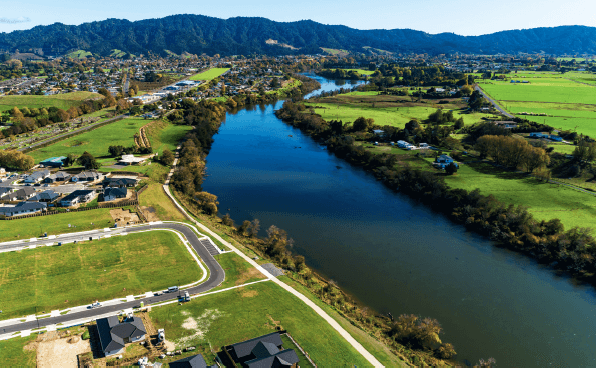
How Green Is The Valley
Sally Lindsay questions if New Zealand is still dominated by vast green fields or whether accelerating urban spread has taken hold.
1 May 2022
The focus on new builds with a record 49,733 homes consented throughout the country in the 12 months to the end of February begs the question is New Zealand still a nation predominantly of vast green fields and farms or is the urban spread taking a more significant hold.
Valocity researchers Wayne Shum and James Wilson have looked at how the surge in new builds is impacting the ratio of urban versus rural land.
The 48,899 consents issued by the end of last year well and truly broke 1974’s 47-year record of 40,025, and the record is still climbing with Stats NZ data showing nearly 1,000 homes a week are now being consented.
The focus on new builds is not surprising given the government’s National Policy Statement on Urban Development that enables greater housing density in major cities.
Shum and Wilson say a quick scan of most news sites shows the challenges the construction industry is facing with material shortages.
New Zealand has experienced strong population growth over the past two decades – an average of 1.3 per cent a year. This is a large contributor to the drive for new builds.
The Covid pandemic is also bringing Kiwis back home and they, too, have put upward pressure on the property market.
“Interestingly though, even with all the residential construction taking place, the proportion of land used for urban/residential homes in New Zealand sits at just 4.3 per cent, with 77 per cent of land being rural and farming, and 18% utilised for parks, reserves and public amenities.”
The researchers say compared with other countries — England has 5.9 per cent urban/residential and 62.8 per cent rural/farming and Japan 9 per cent urban/residential — perhaps NZ can hang on to its green fields status.
Regional View
Given NZ is a diverse country with densely populated urban centres and vast expanses of rural land, Shum and Wilson studied the urban v rural split by region.
No surprise that Auckland is the most urban region at 34.3 per cent, which reflects demand from its growing population. Even still, Auckland’s scale remains tipped towards rural/farming at 45.5 per cent. The least urban district is Gisborne at 1.4 per cent due to its 81 per cent of rural/farming land.
Nelson is the second most urban region at 19.7 per cent, Whanganui is the most rural at 91.9 per cent, and Tasman wins the amenities prize by a long way at 55.9 per cent, with three national parks.
Drilling further into Auckland, commercial and industrial properties make up most of the land use in Auckland and Manukau cities, both being the employment base for the region. The proportion of commercial and industrial land use in other parts of Auckland is considerably lower.
Waitakere and North Shore have the highest proportion of urban/ residential land at more than 50 per cent, and Rodney and Franklin have the biggest green belts. About 18 per cent of Auckland land is used for resident amenities such as parks and schools.
Density Issue
While some urban councils have plans to expand their urban fringes, there is and will probably always be strong pressure to maintain a green belt around urban centres.
“Plus, extending infrastructure into these areas is not simple or cheap, so it’s unlikely New Zealand’s urban land will suddenly increase to Japan’s proportions,” say Shum and Wilson.
What we are seeing already, and will continue to see, is an intensification of density within the urban limit: more townhouses and multi-level complexes being built as encouraged by the National Policy Statement on Urban Development.
“The reality is, New Zealand is no different to any other western nation, albeit we’ve had the luxury of enjoying more space for longer,” they say.
The level of urban intensification encouraged by the government and local councils is in line with international norms. “If executed correctly, we can expect to see greater expansion along growth corridors that is supported by transport infrastructure such as mass transit,” say Shum and Wilson.


